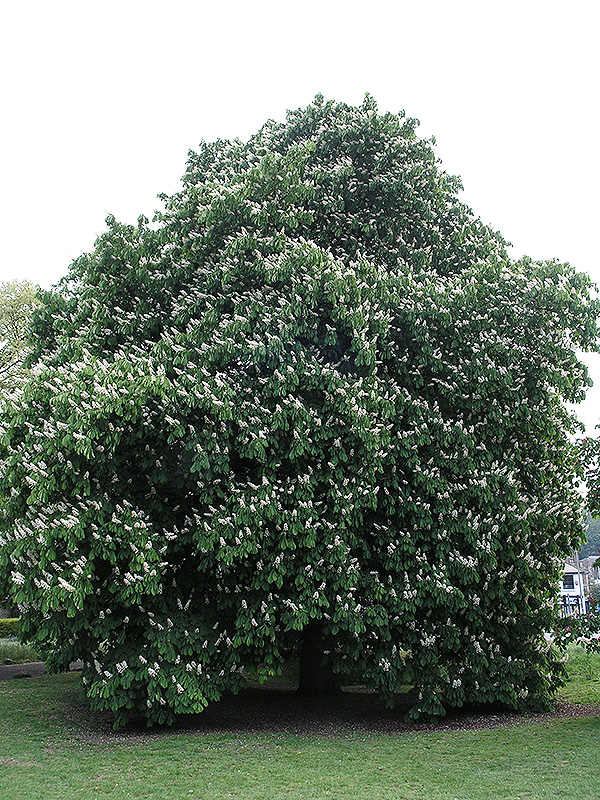
Woody > Aesculus > Aesculus hippocastanum > Aesculus hippocastanum 'Baumannii'
Aesculus hippocastanum
'Baumannii'
Baumann Horsechestnut
Origin: 'Baumannii' was discovered as a sport of a branch by A. N. Baumann near Geneva, Switzerland around 1820.
Mike's
Opinion


"
A European cultivar that at maturity becomes quite a regal specimen with its broadly pyramdial-rounded form and branches that ascend to the ground. It is spectacular in bloom. It does not produce the typical chestnut fruit which can be a litter problem as with the species but does suffer from extensive leaf anthracnose late in the autumn; other than being unsightly at this stage it does little to damage the tree. The preferred choice over A.hipposcastanum
Michael Pascoe, NDP., ODH., CLT., MSc. (Plant Conservation)
"
| Family |
| Sapindaceae (Hippocastanaceae) |
| Genus |
| Aesculus |
| Species |
| hippocastanum |
| Cultivar |
| 'Baumannii' |
| Category |
| Woody |
| Type |
| Tree (deciduous) |
| Pronunciation |
| USDA Hardiness Zone |
| 3 |
| Canadian Hardiness Zone |
| 1 |
| RHS Hardiness Zone |
| H7 |
| Temperature (°C) |
| -40 - (-35) |
| Temperature (°F) |
| -40 - (-30) |
| Height |
| 30 m |
| Spread |
| 15 m |
Photographs
Description and Growing Information
Flowering Period
| General Description |
| Large palmate leaf, with brown hairs on the upper surface of the leaf axil. Does not produce fruit since the double flowers are sterile. Broadly pyramidal-rounded form with branches ascending to the ground. Spectacular in bloom. |
| Cultivation |
| Tolerant of a wide variety of conditions but likes adequate moisture in our summer droughts. Does not like waterlogged soil. |
| Shape |
| Large, pyramidal to rounded crown |
| Growth |
| Medium |
| ID Characteristic |
| A double flowering form of A.hippocastanum that produces sterile flowers and hence no seed litter. |
| Pests |
| Extensive leaf blotch (Guignardia aesculi) but does little damage to the tree since it occurs late in the season and hence does not warrant control. Symptoms are irregular brown blotches with light yellow borders, with severe infections causing premature leaf drop. Remove and dispose of all fallen leaves in the autumn, do not compost. Prone to horse chestnut leaf miner ( Cameraria ohridella). |
| Habitat |
| Horticultural origin. |
| Bark/Stem Description |
| Dark grey, forming large flat plates. |
| Flower/Leaf Bud Description |
| Very large, up to 1 cm, globose, acutely pointed, and resinous. |
| Leaf Description |
| Large palmate leaf, with brown hairs on the upper surface of the leaf axil. |
| Flower Description |
| Double formed flowers in 20 cm panicles held candelabra fashion above the foliage. |
| Fruit Description |
| Does not produce fruit since the cultivar is sterile. |
| Colour Description |
| Little autumn colour since the tree by this time is severely infected with anthracnose, giving the leaves a rusty apperance and texture. Ugly! |
| Texture Description |
| Coarse textured tree. |
| Notable Specimens |
| Queen Victioria Park, London, Ontario, Canada. The Gardens of Fanshawe College, London, Ontario, Canada. |
| Propagation |
| Grafted on A. hippocastanum rootstock. |




